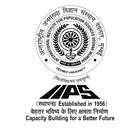- About IIPS
- Academics
- Study @ IIPS
- Departments
- Centres
- Controller of Examination
- Programme
- Distance and Online Education
- Training
- Facilities/Services
- Resources
- Virtual Learning
- Digital Initiatives (MHRD)
- Notice
- Seminars / Workshops / Conferences
- Conferences
- Publications
- Seminars
- Sponsored Research
- Workshops
- Collaboration
- National
- International
- NEP 2020
- Admission
- Courses
- Admission Bulletin
- TIME-TABLE For Admission 2025-26
- Model Question Papers
- Programme Coordinators
- Fellowships
- Academic Calendar
- International Students
- Visa Information
- Administration
- Faculty & Staff
- Research & Publications
- Library
- Information
- Right to Information
- Vigilance Officer
- Annual Report
- Director's Report
- Cells & Commitees
- Cells
- Commitees
- Committees of NEP 2020
- Staff Walfare Committee
- Cultural Committee
- Internal Committee
- Purchase Commitee
- Students Academic Committee
- Student Research Ethics Committee
- Anti-Ragging Committee
- Institutional Review Board
- Social Media Committee
- Prevention of Caste-based Discrimination Committee
- Code of Conduct and Professional Ethics
- National and International honours, Awards, Recognition, and Medals
- Online Facilities
- Employee's Corner
- Memorial Lectures
- Convocation
- IIPS Newsletters
- COVID 19 Information
- Life @ IIPS
Status of Nutrition Insecurity of the Poor and Non-Poor Households -A Study with Special Reference to Uttar Pradesh vis-a-vis Other States of India
- Home
- Status of Nutrition Insecurity of the Poor and Non-Poor Households -A Study with Special Reference to Uttar Pradesh vis-a-vis Other States of India
Abstract Content (not more than 300 word, should include: Introduction, Objective, Methodology, critical findings & Conclusion):
Objectives: The present study analyses the status of nutrition insecurity in relation to the status of poverty in Uttar Pradesh vis-à-vis other states of India and also examines the role of the Public Distribution System (PDS) along with other socioeconomic indicators for reducing nutrition insecurity of non-poor as well as poor households on the basis of National Sample Survey Organization (NSSO) unit level data of Consumer Expenditure Survey of the latest rounds. In the past couple of decades, the Indian economy has experienced relatively high economic growth and a decline in poverty over the past two decades. However, this transformation has not been matched by improvements in nutritional status. This research addresses a critical gap by assessing the nutrition status of non-poor households at the disaggregate level of India. Methods/Analyses: Foster, Greer, and Therbecke's (1984) methodology is used to measure the status of Poverty and nutrition security. We have used a multinomial logit model to analyze the evolving landscape of nutritional insecurity of both poor as well non-poor households at the disaggregate level of India. Findings: The iincidence of poverty as well as nutrition insecurity at the state level has declined significantly from 2004-05 to 2011-12. In Uttar Pradesh, it was much higher than the all-India level. As much as 24.4 per cent of non-poor households in 2011-12 still remained nutritionally insecure in India whereas this share was 24.1 Percent in the case of Uttar Pradesh. Level of education, food consumption expenditure, PDS benefits, and cultivable land have favorable impacts on the nutritional status of non-poor households. An increase in monthly food expenditure does not ensure nutrition security but an increase in PDS benefits in kind overcomes the nutrition insecurity. Therefore, the study strongly recommends the continuation of PDS benefits in kind to achieve the SDGs concerning nutrition.
Abstract theme:
In case of not been selected for oral presentation, do you want to be considered for the poster presentation ?:
Yes
Do you require financial support to attend the seminar ? (Not applicable for virtual meet):
Yes-full
Gender:
Male
Evaluation Status:
No
